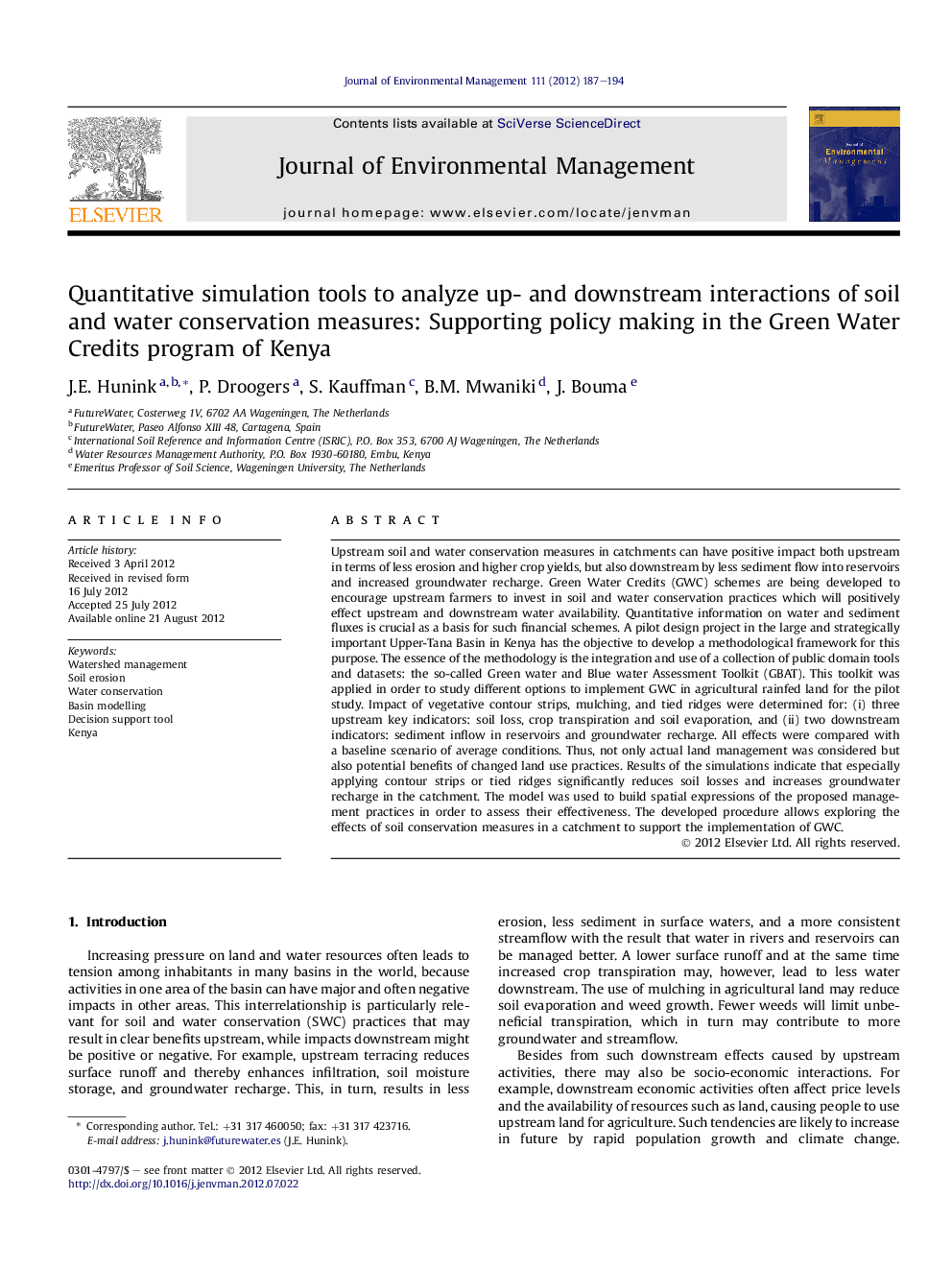| Article ID | Journal | Published Year | Pages | File Type |
|---|---|---|---|---|
| 1056555 | Journal of Environmental Management | 2012 | 8 Pages |
Upstream soil and water conservation measures in catchments can have positive impact both upstream in terms of less erosion and higher crop yields, but also downstream by less sediment flow into reservoirs and increased groundwater recharge. Green Water Credits (GWC) schemes are being developed to encourage upstream farmers to invest in soil and water conservation practices which will positively effect upstream and downstream water availability. Quantitative information on water and sediment fluxes is crucial as a basis for such financial schemes. A pilot design project in the large and strategically important Upper-Tana Basin in Kenya has the objective to develop a methodological framework for this purpose. The essence of the methodology is the integration and use of a collection of public domain tools and datasets: the so-called Green water and Blue water Assessment Toolkit (GBAT). This toolkit was applied in order to study different options to implement GWC in agricultural rainfed land for the pilot study. Impact of vegetative contour strips, mulching, and tied ridges were determined for: (i) three upstream key indicators: soil loss, crop transpiration and soil evaporation, and (ii) two downstream indicators: sediment inflow in reservoirs and groundwater recharge. All effects were compared with a baseline scenario of average conditions. Thus, not only actual land management was considered but also potential benefits of changed land use practices. Results of the simulations indicate that especially applying contour strips or tied ridges significantly reduces soil losses and increases groundwater recharge in the catchment. The model was used to build spatial expressions of the proposed management practices in order to assess their effectiveness. The developed procedure allows exploring the effects of soil conservation measures in a catchment to support the implementation of GWC.
► Framework to assess upstream and downstream impact of soil and water conservation. ► Linking basin stakeholders to support policy making and to set up financial schemes. ► Quantifying Green Water versus Blue Water, erosion and sediment yields. ► Comparison of management scenarios to show the potential benefits to stakeholders. ► Set of tools for insight in the spatial variability of impacts and effectiveness.
